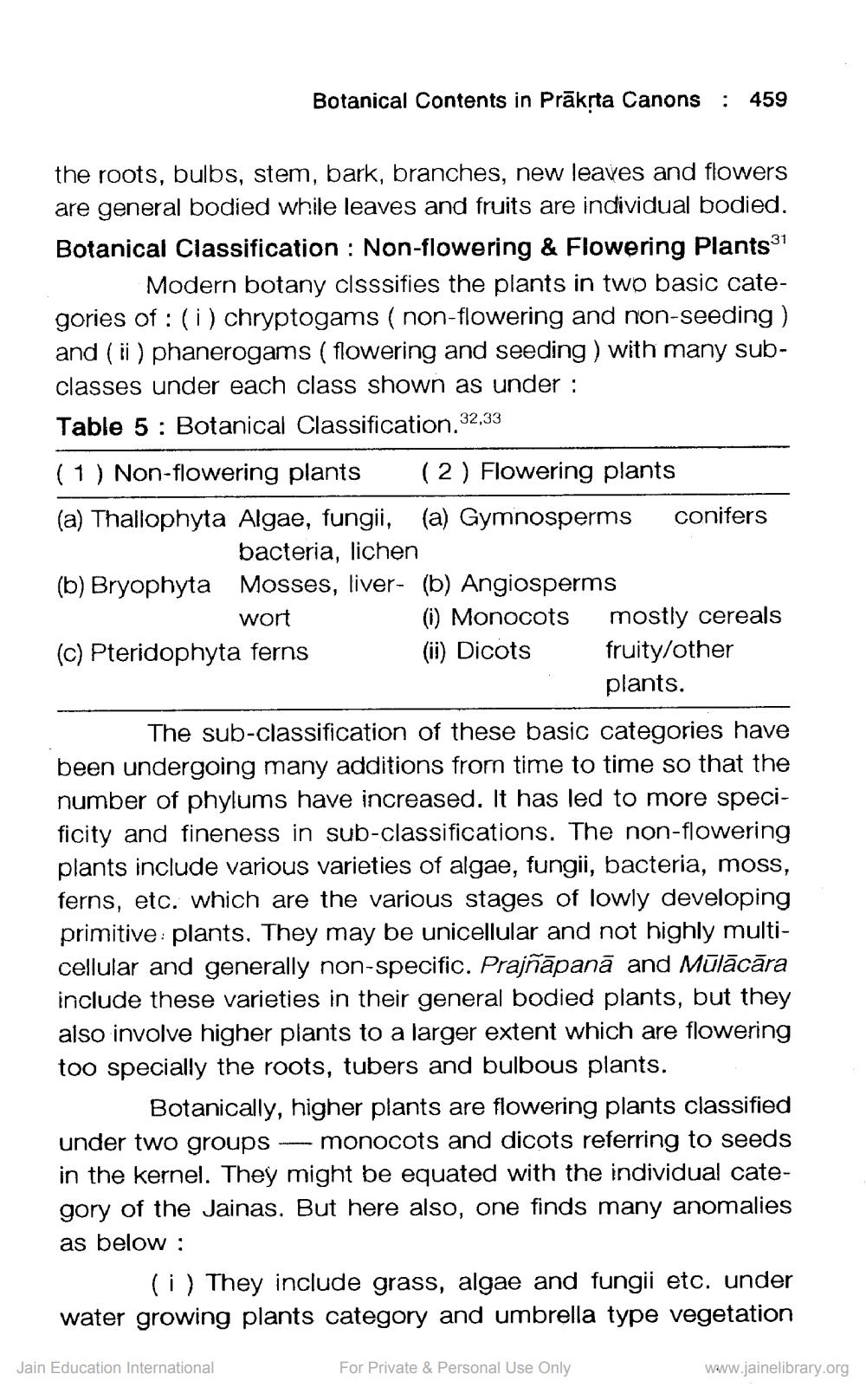________________
the roots, bulbs, stem, bark, branches, new leaves and flowers are general bodied while leaves and fruits are individual bodied. Botanical Classification: Non-flowering & Flowering Plants31
Modern botany clsssifies the plants in two basic categories of: (i) chryptogams (non-flowering and non-seeding) and (ii) phanerogams (flowering and seeding) with many subclasses under each class shown as under :
Table 5
Botanical Classification,32,33
(1) Non-flowering plants
(a) Thallophyta Algae, fungii, bacteria, lichen
(b) Bryophyta Mosses, liver- (b) Angiosperms
(i) Monocots (ii) Dicots
wort
(c) Pteridophyta ferns
Botanical Contents in Prākṛta Canons : 459
(2) Flowering plants
(a) Gymnosperms
Jain Education International
conifers
The sub-classification of these basic categories have been undergoing many additions from time to time so that the number of phylums have increased. It has led to more specificity and fineness in sub-classifications. The non-flowering plants include various varieties of algae, fungii, bacteria, moss, ferns, etc. which are the various stages of lowly developing primitive plants. They may be unicellular and not highly multicellular and generally non-specific. Prajñāpanā and Mūlācāra include these varieties in their general bodied plants, but they also involve higher plants to a larger extent which are flowering too specially the roots, tubers and bulbous plants.
mostly cereals fruity/other plants.
Botanically, higher plants are flowering plants classified under two groups monocots and dicots referring to seeds in the kernel. They might be equated with the individual category of the Jainas. But here also, one finds many anomalies as below:
(i) They include grass, algae and fungii etc. under water growing plants category and umbrella type vegetation
For Private & Personal Use Only
www.jainelibrary.org




